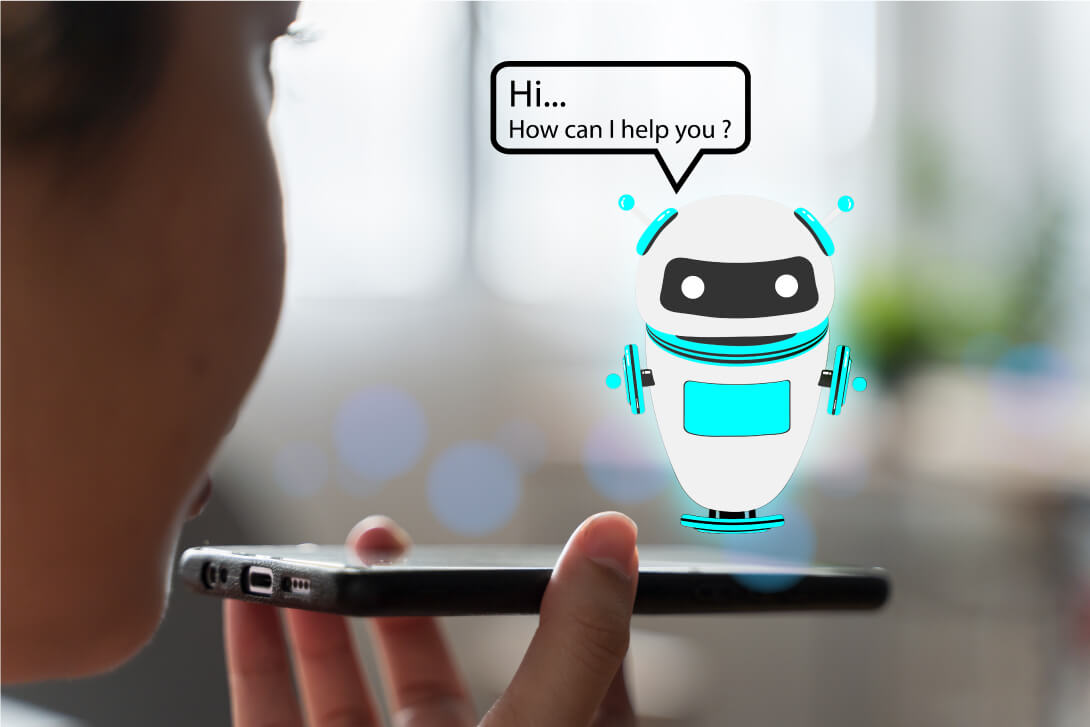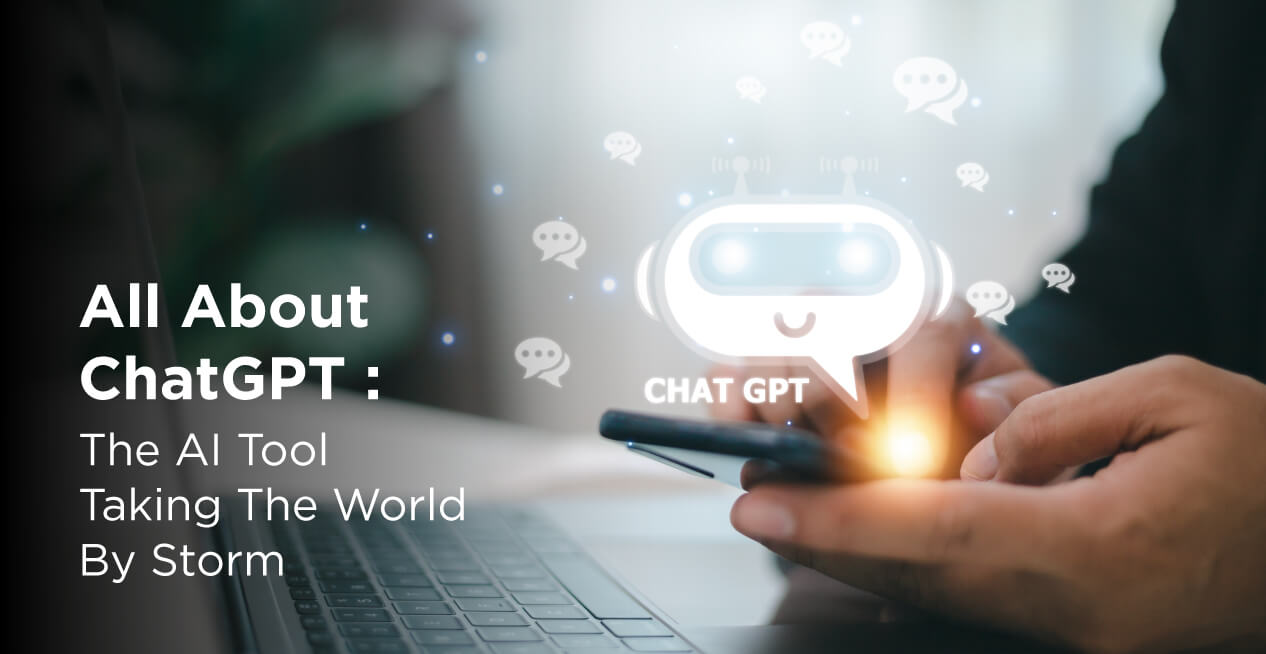As time has passed, AI chatbots have evolved from rudimentary keyword-based systems to sophisticated language models that can comprehend and generate realistic, human-like text. ChatGPT represents a significant advancement in this field. With its impressive language processing capabilities, it opens up a wealth of opportunities for businesses, developers, and individuals alike.
In today’s fast-paced, technology-driven world, ChatGPT shines as a major breakthrough in the realm of AI language models. Developed by OpenAI and based on the GPT-4 architecture, ChatGPT is transforming the way we communicate, collaborate, and interact in our increasingly digital lives.
As time has passed, AI chatbots have evolved from rudimentary keyword-based systems to sophisticated language models that can comprehend and generate realistic, human-like text. ChatGPT represents a significant advancement in this field. With its impressive language processing capabilities, it opens up a wealth of opportunities for businesses, developers, and individuals alike.
In this blog, we will take a closer look at the evolution of chatbots and the GPT series, discuss the key features that set ChatGPT apart, and explore some exciting real-world applications. We will also tackle the ethical challenges associated with AI and how the industry is working to address these issues. Finally, we’ll cast our eyes to the future of ChatGPT and AI, envisioning the boundless possibilities that lie before us.
The Evolution of Chatbots and GPT
The journey of chatbots and conversational AI has been a remarkable one. From their humble beginnings as rudimentary text-based systems to the advanced natural language models we see today, chatbots have come a long way. In this section, we will take a closer look at the evolution of chatbots, the development of the GPT series, and how they paved the way for ChatGPT.
The journey of chatbots and conversational AI has been a remarkable one. From their humble beginnings as rudimentary text-based systems to the advanced natural language models we see today, chatbots have come a long way. In this section, we will take a closer look at the evolution of chatbots, the development of the GPT series, and how they paved the way for ChatGPT.
Early Chatbots and Their Limitations
The earliest chatbots were based on rule-based systems and relied on simple pattern matching to respond to user inputs. Programs like ELIZA (1966) and PARRY (1972) laid the foundation for chatbot technology. However, these early chatbots had their limitations – they were unable to understand context or generate nuanced responses, often leading to unnatural and disjointed conversations.

As AI research progressed, machine learning techniques were employed to create more sophisticated chatbots. Despite these improvements, most chatbots remained limited in their understanding of language and their ability to engage in meaningful conversations.
Development of GPT Models
The introduction of the GPT (Generative Pre-trained Transformer) series by OpenAI marked a major turning point in the field of natural language processing. The first GPT model, released in 2018, demonstrated an unprecedented ability to understand and generate human-like text. Successive iterations of the GPT series brought further enhancements and capabilities:
GPT-1, GPT-2, and GPT-3
GPT-1 laid the groundwork for the series, but it was GPT-2 that made headlines in 2019 with its vastly improved text generation capabilities. GPT-2 raised concerns about potential misuse due to its ability to create realistic and coherent text, leading OpenAI to initially limit public access to the model.
In 2020, GPT-3 was released, featuring an impressive 175 billion parameters and offering even more advanced language processing capabilities. GPT-3 became a favorite among developers for its ability to generate high-quality text across a wide range of applications, from content creation to programming assistance.
Advancements in Natural Language Processing
The GPT series’ success can be attributed to its transformer architecture and the use of unsupervised learning through pre-training on massive amounts of text data. By leveraging the context of both past and future words in a sentence, GPT models can generate more coherent and contextually accurate text. This has significantly improved the quality of conversations with AI language models and expanded the range of potential applications.
Transition to GPT-4 and ChatGPT
Building on the success of previous GPT models, GPT-4 was developed with even greater capabilities, setting the stage for the birth of ChatGPT. This new model boasts improved performance, better understanding of context, and enhanced creativity, making it a powerful tool for a diverse array of applications.
Improvements in Performance
ChatGPT benefits from the advancements made in GPT-4, including a more extensive knowledge base, improved context retention, and faster response times. These improvements allow ChatGPT to engage in more meaningful and natural conversations with users, addressing many of the limitations faced by earlier chatbot technologies.
Expansion of Applications
As a result of its advanced language capabilities, ChatGPT has found its way into numerous industries and applications, such as customer support, content creation, virtual assistance, education, and more. Its versatility and adaptability have made it an invaluable resource for businesses and individuals alike, revolutionizing the way we interact with AI.
Key Features of ChatGPT
The success of ChatGPT as a powerful AI language model can be attributed to its unique features that sets it apart from its predecessors and contemporaries. In this section, we will explore the key features that make ChatGPT a highly versatile and sought-after tool for various applications across industries.
Context-Awareness
One of the most significant advancements in ChatGPT lies in its ability to understand and retain context throughout the conversation. Earlier chatbot models often struggled to maintain context, resulting in disjointed and unnatural exchanges. ChatGPT, however, is designed to process and remember the context of both user inputs and its previous responses, leading to more coherent and engaging interactions.
Advanced Language Capabilities
ChatGPT’s strength lies in its exceptional natural language processing capabilities, enabling it to comprehend and generate human-like text with a high degree of accuracy. Building on the transformer architecture and unsupervised learning techniques used in GPT models, ChatGPT can understand a wide range of inputs, from simple questions to complex statements, and produce relevant, high-quality responses. Its extensive pre-training on vast amounts of text data also allows it to draw on a broad knowledge base, further enhancing its language capabilities.
Enhanced Creativity
Another remarkable feature of ChatGPT is its ability to generate creative and unique responses. This sets it apart from traditional chatbots that often relied on canned responses or basic pattern matching. ChatGPT’s creativity enables it to produce engaging content, brainstorm ideas, and even assist with tasks like programming, making it a versatile tool for a wide range of applications.
Integration with Various Platforms
The adaptability of ChatGPT has allowed for its integration with multiple platforms and services. Its API can be easily accessed and implemented by developers, enabling them to create custom chatbots, virtual assistants, or other AI-powered applications tailored to specific needs. This seamless integration has facilitated the adoption of ChatGPT across industries, ranging from customer support and marketing to education and entertainment.
Adaptable to Various Industries
ChatGPT’s versatility is one of its most attractive features, as it can be utilized across a diverse array of industries and applications. Its advanced language capabilities, combined with its ability to understand context and generate creative responses makes it an invaluable tool for businesses and individuals alike. Here are some examples of industries where ChatGPT has found a foothold:
Customer Support: ChatGPT can handle customer inquiries, provide instant support, and reduce response times, improving overall customer experience.
Content Creation: It can assist writers, marketers, and bloggers by generating ideas, creating outlines, or even writing complete articles.
Virtual Assistance: ChatGPT can be integrated into smart home devices or personal assistant applications, providing users with information, scheduling, and other day-to-day tasks.
Language Translation: Its advanced language capabilities allow ChatGPT to perform accurate translations, making it a valuable tool for cross-lingual communication.
Education and Tutoring: ChatGPT can provide personalized learning experiences, answer questions, and offer guidance to students on various subjects.
Also, read everything you need to know about ChatGPT vs Google BARD vs Bing Chat.
Real-World Applications of ChatGPT
The versatility and advanced capabilities of ChatGPT have led to its adoption across various industries, revolutionizing the way we interact with AI-powered systems. In this section, we will explore some of the most exciting and impactful real-world applications of ChatGPT, showcasing its potential to transform businesses, enhance user experiences, and improve our daily lives.
Customer Support and Service
One of the most prevalent applications of ChatGPT is in customer support, where it has demonstrated its ability to handle a wide range of inquiries and provide instant assistance. By integrating ChatGPT into customer support systems, businesses can reduce response times, improve the customer experience, and free up human agents to focus on more complex issues. This, in turn, leads to increased customer satisfaction, reduced operational costs, and a more streamlined support process.
Content Creation
ChatGPT’s advanced language capabilities and creativity make it an invaluable tool for content creators, marketers, and bloggers. It can assist in generating ideas, creating outlines, and even writing complete articles, enabling creators to produce high-quality content more efficiently. Additionally, its ability to generate unique and engaging text helps content creators maintain their audience’s interest and ensure that their message is effectively conveyed.
Virtual Assistants and Smart Home Devices

The integration of ChatGPT into virtual assistants and smart home devices has significantly improved their functionality and user experience. By leveraging ChatGPT’s context-awareness and language capabilities, these devices can provide users with more accurate information, better scheduling, and improved day-to-day task management. This has led to a more seamless and intuitive interaction between users and their AI-powered assistants, enhancing the overall utility of these devices.
Language Translation
ChatGPT’s extensive pre-training on vast amounts of multilingual text data enables it to perform accurate translations across multiple languages. This has opened up new possibilities for cross-lingual communication and collaboration, breaking down language barriers in business, education, and other fields. By integrating ChatGPT into translation services and tools, users can access more accurate translations, facilitating clearer communication and understanding between people of different linguistic backgrounds.
Education and Tutoring
The adoption of ChatGPT in the education sector has the potential to revolutionize learning experiences and make education more accessible. By providing personalized learning experiences, answering questions, and offering guidance on various subjects, ChatGPT can support students in their learning journey. This can be particularly beneficial for remote learning or situations where access to human tutors is limited. Additionally, ChatGPT can be used as a tool for educators to create engaging lesson plans, provide feedback on student work, and enhance their teaching methods.
Gaming and Storytelling
ChatGPT’s creativity and language capabilities have also found a place in the world of gaming and storytelling. Game developers can utilize ChatGPT to create immersive narratives, generate dynamic dialogues, and enhance the overall gaming experience. Its ability to generate contextually relevant and engaging content allows for more interactive and personalized gaming experiences. Similarly, ChatGPT can be used by writers and storytellers to brainstorm ideas, develop characters, and create compelling narratives, adding a new dimension to the creative process.
Ethical Considerations and Responsible AI Development
As we embrace the capabilities and applications of advanced AI language models like ChatGPT, it is crucial to address the ethical considerations and the importance of responsible AI development. In this section, we will discuss the potential challenges and concerns surrounding AI language models and explore the steps being taken to ensure the responsible use of AI technology.
Potential Misuse and Unintended Consequences
The power of AI language models, including ChatGPT, brings with it the potential for misuse and unintended consequences. The ability to generate realistic and coherent text can be exploited for purposes such as disinformation, fake news, or even malicious content. Additionally, there are concerns surrounding privacy, data security, and the potential for AI systems to inadvertently perpetuate biases present in their training data.
Addressing Bias and Fairness
One of the primary challenges in AI development is addressing the issue of bias and ensuring fairness in AI systems. AI language models, including ChatGPT, are trained on vast amounts of text data from diverse sources, which may contain biases and stereotypes. Developers and researchers must continuously work to identify and mitigate these biases, ensuring that AI systems treat users fairly and without prejudice.
Transparency and Accountability
A key aspect of responsible AI development is maintaining transparency and accountability throughout the development process. Open communication regarding the methodologies, data sources, and decision-making processes in AI development can help build trust and promote the responsible use of AI technology. Ensuring that developers and organizations are held accountable for the AI systems they create is essential in fostering an ethical AI ecosystem.
Privacy and Data Security

As AI systems become more advanced and integrated into our daily lives, concerns surrounding privacy and data security become increasingly important. Developers must implement robust security measures and adhere to best practices to protect user data and ensure that AI systems respect user privacy. This includes transparent data handling practices, secure storage of data, and safeguards against unauthorized access or misuse.
Encouraging Ethical AI Research and Development
Responsible AI development requires a collective effort from researchers, developers, organizations, and policymakers to create an ethical framework that guides the development and deployment of AI technology. This includes fostering a culture of collaboration and information sharing, developing guidelines and best practices, and encouraging open dialogue about the ethical implications of AI research and development.
OpenAI’s Commitment to Responsible AI Development
OpenAI, the organization behind the GPT series and ChatGPT, is committed to the responsible development and deployment of AI technology. They have established guidelines and principles to ensure that their AI systems are used for the benefit of all and to avoid potential harm. Some of the steps taken by OpenAI to promote responsible AI development include:
Prioritizing Safety Research: OpenAI is dedicated to conducting research on AI safety to minimize the risks and unintended consequences of AI systems.
Addressing Bias: OpenAI actively works to identify and mitigate biases in their AI models, ensuring that they are as fair and unbiased as possible.
Collaboration and Cooperation: OpenAI emphasizes the importance of cooperation among AI researchers, developers, and organizations to address global challenges and share knowledge about AI safety, policy, and ethics.
Transparency and Accountability: OpenAI is committed to providing public goods, such as sharing research and insights, to help society navigate the path to AGI (Artificial General Intelligence) while ensuring transparency and accountability in their AI development processes.
The Future of ChatGPT and AI Language Models
As AI technology continues to evolve and develop, we can expect significant advancements in AI language models like ChatGPT. In this section, we will explore some of the potential future developments and trends in the world of AI-powered language processing, highlighting the exciting possibilities that lie ahead.
Improved Contextual Understanding
One of the key areas of focus for future AI language models is enhancing their contextual understanding capabilities. As models become more adept at understanding context and maintaining coherence throughout a conversation, the interactions with these AI systems will become even more seamless and human-like. This will undoubtedly improve the user experience and open up new possibilities for AI-powered communication.
Multimodal AI Systems
The integration of AI language models with other AI technologies, such as computer vision and speech recognition, will pave the way for multimodal AI systems. These systems will be able to understand and process information from multiple sources, such as text, images, and audio, enabling more comprehensive and sophisticated AI applications. This could lead to advancements in areas such as virtual reality, augmented reality, and telepresence, where AI language models like ChatGPT can be combined with other technologies to create immersive and interactive experiences.
Personalized AI Experiences
As AI language models continue to improve, we can expect to see more personalized and adaptive AI experiences. These systems will be able to tailor their responses and interactions based on individual user preferences, needs, and contexts, making them more effective and engaging. This personalization could extend to areas such as content creation, education, and customer support, where AI systems can adapt to individual users, providing more relevant and customized experiences.
Improved Collaboration between AI and Humans
Future advancements in AI language models will facilitate better collaboration between AI systems and humans. As AI becomes more proficient in understanding human language, it can be used as a tool to enhance human creativity, problem-solving, and productivity. By working together, humans and AI systems can achieve outcomes that would be difficult or impossible to achieve individually.
Conclusion: Embracing the Possibilities of ChatGPT and AI Language Models
The rapid advancements in AI language models like ChatGPT have already had a profound impact on various industries, from customer support and content creation to education and entertainment. As these technologies continue to evolve, we can expect even more transformative applications, redefining the way we communicate, work, and interact with AI-powered systems.
However, as we embrace the potential of AI language models, it is essential to remain mindful of the ethical considerations and the importance of responsible AI development. By addressing potential challenges, prioritizing safety and fairness, and fostering transparency and accountability, we can ensure that the benefits of AI technology are shared by all while minimizing potential harm.
The future of AI and natural language processing is full of promise and opportunity, and ChatGPT serves as a testament to the incredible progress we’ve made in AI research. By continuing to push the boundaries of AI technology, collaborating across industries, and prioritizing ethical AI development, we can unlock the full potential of AI language models and create a future driven by innovation, cooperation, and responsible AI deployment.
In conclusion, ChatGPT represents a significant milestone in the development of AI language models, showcasing the potential of AI to transform industries and improve our daily lives. By embracing the possibilities of ChatGPT and future AI language models, while remaining committed to ethical AI research and development, we can shape a future that is both exciting and responsible, where AI technology is harnessed for the benefit of all.








